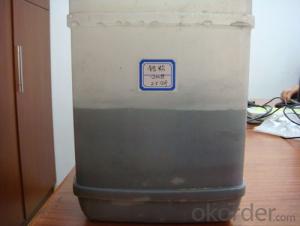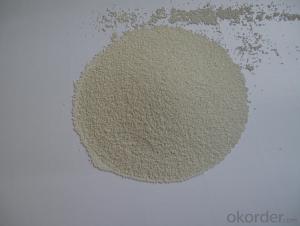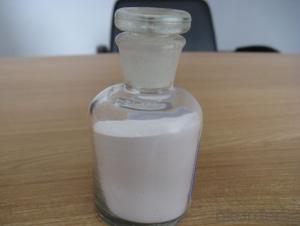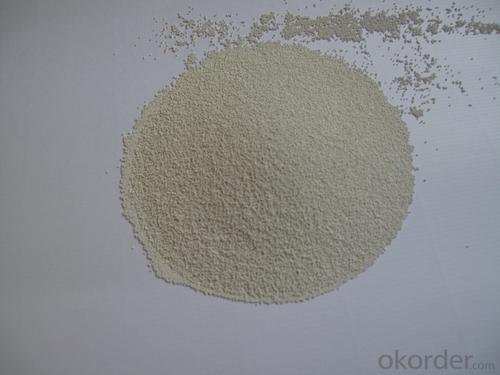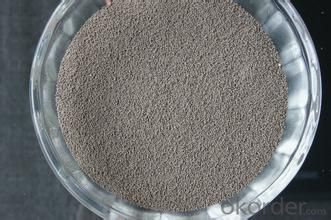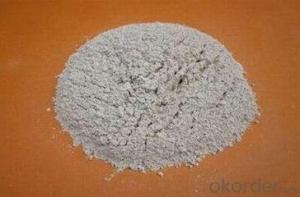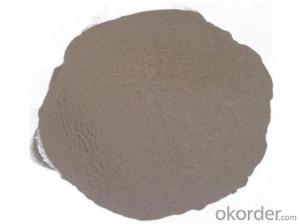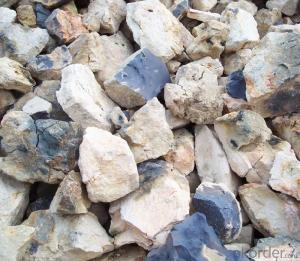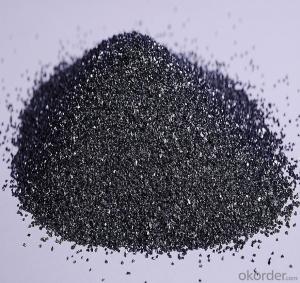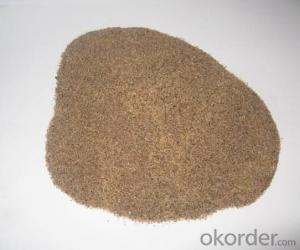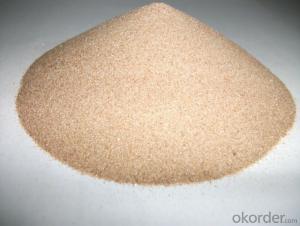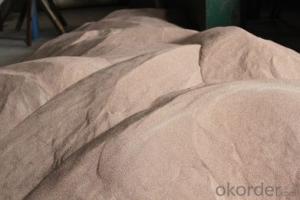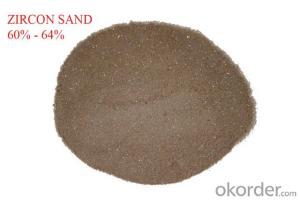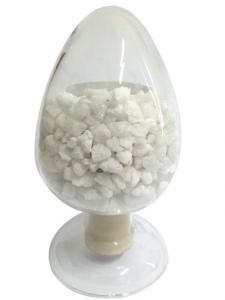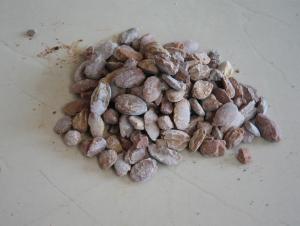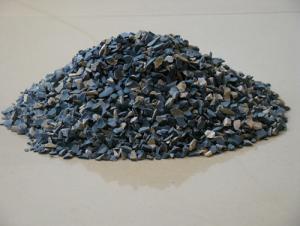Raw Materials for Refractory:Zircon Sand and Zircon Flour/Powder
- Loading Port:
- Tianjin
- Payment Terms:
- TT OR LC
- Min Order Qty:
- 25 m.t.
- Supply Capability:
- 3000 m.t./month
OKorder Service Pledge
OKorder Financial Service
You Might Also Like
Refractory Materials/ Zircon Sand and Zircon Flour/ Powder
1.Structure of Zircon Sand and Zircon Powder
We are offer zircon sand With Below Mention Descriptions: ZrO2 65 - 67 %. We are offer zircon sand With Below Mention Descriptions: ZrO2 65 - 67 %. Zircon is a remarkable mineral, if only for its almost ubiquitous presence in the crust of Earth. It occurs in igneous rocks as primary crystallization products, in metamorphic rocks and in sedimentary rocks as detrital grains.
Further, the mineral due to hardness, durability and chemical inertness, zircon persists in sedimentary deposits and is a common constituent of most sands.
2.Main Features of Zircon Sand and Zircon Powder
1 Tiny, round, solid ball shape provides greater surface area for improved performance and dispersion in its application
2 High refractory rating, lower specific gravity rating, and higher service temperature produces greater yield
3 With lower bulk density, it offers better air permeability for better performance as a result of its overall physical characteristics
3.Main usage of Zircon Sand and Zircon Powder
1)80-120M zircon sand is used in investment casting, the processing is called dipping
2)It can enhance the shell`s thickness
3)It is specialize used in inner layer being mixed with silica sol.High temperature applications. Primary source for investment casting shell molds, foundry cores,
metal chills, ladle brick, welding rod coatings, abrasive cleaning, ceramics, glass, chemical,
refractory bricks, abrasive & mold washes, solid oxide fuel cells and nuclear power plants.
4. Zircon Sand and Zircon Powder Images

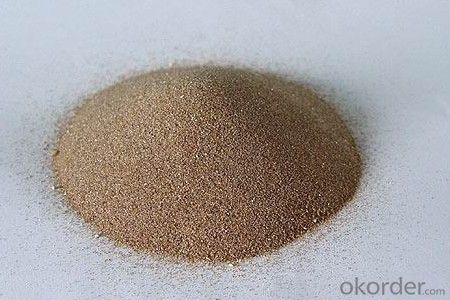
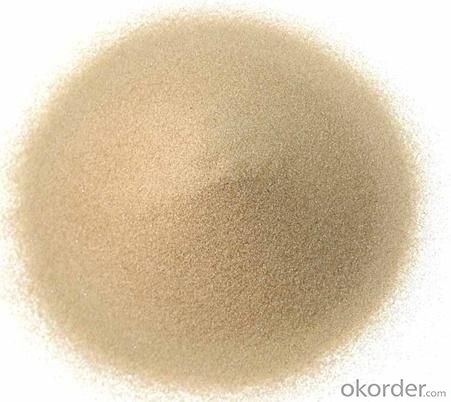
5. Zircon Sand and Zircon Powder Specification
Specific gravity | 4.7 |
Bulk density | 170 – 180 lb/ft³ (2700 kg/m³) |
Hardness | 7.5 Mohs |
Angle of repose | 30° |
Melting point | 4000° F (2200° C) |
Thermal stability | no change to 3090° F (1700°C) |
Loss on ignition | 0.02 – 0.12% |
6.FAQ of Zircon Sand and Zircon Powder
1). Q: Are you a factory or trading company?
A: We are a factory.
2). Q: Where is your factory located? How can I visit there?
A: Our factory is located in China. You are warmly welcomed to visit us!
3). Q: How can I get some samples?
A: Please contact me for samples
- Q: what is the grading standards of external wall thermal insulation materials?
- What is the grading standards of external wall thermal insulation materials? summarizing the three versions of GB8624 (1997,2006,2011) external wall insulation fire rating can be basically divided into: A1, A2, B1, B2, B3 and other levels. the dividing is based on many technical indicators. It takes time to explain for It is professional and technical. For details, please contact Qingdao Shan Textile Instrument. they specialized in external wall insulation fire rating tester.
- Q: How many kinds of fireproof materials are there in the market?
- rock wool board? inorganic thermal insulation mortar? glass wool board? expanded glass? ceramic foam plate? sand aerated concrete? haydite concrete? foam cement? vitrified micro bubble panel
- Q: The mechanism and function of antioxidants in carbon containing composite refractories are briefly described.
- Mechanism analysis of silicon actionWhen silica fume is added to the carbon composite refractory, the phase changes and chemical changes are as follows:<1> Si (s) +C (s) =SiC (s) Delta G ~ =-522+1.50T (kJ)<2> Si (s) +MgO (s) =Si (g) +Mg (g) Delta G ~ =203.9-0.13T (kJ)<3> 2Si (s) +CO (g) =SiC (s) +SiO (g) Delta G ~ =-963.2+0.31T (kJ)<4> SiC (s) +CO (g) =SiO (g) +2C (s) Delta G ~ =81.47-0.15T (kJ)<5> SiO (g) +CO (g) =SiO2 (s) +C (s) Delta G ~ =-668.8+0.33T (kJ)From the above diagram and the reactions seen at high temperatures has joined the Si SiO and Mg volatiles, but <4> and <5> reaction have played a role in inhibiting carbon oxidation, and the condensation of SiO2 to a certain extent the role of protective film.The total reaction process is CO reduction to C, and there is a certain volume expansion, so that the pores are blocked and the density of bricks is increased. Therefore, the oxidation resistance of brick is improved.
- Q: Why the refractories should be waterproof and wetproof
- It is necessary to like magnesium carbon, waterproof and wetproof is more important. There is a variety of refractory materials, in general, basic is defective, and wherein the binder and additives water will lose their effect, the relationship is not very high aluminum large amount of water determines how much of the performance after the hydration will affect the strength and high temperature performance ;; hydration & quot, just need a little package like magnesium and calcium-based product itself readily react with water to calcium oxide, magnesium, chromium is not all the material goods have waterproof ordinary bulk materials need to add water before use
- Q: Why do magnesium oxide refractory bricks can be made into refractories?
- Because the magnesium oxide, commonly known as magnesia, which is a basic oxide, with the common property of alkali oxides and belongs to the cementitious material . It is white or light yellow powder, odorless, tasteless, non-toxic and a typical of alkaline earth metal oxide, whose chemical formula is MgO. It is white powder, with melting point of 2852 ℃, boiling point of 3600 ℃ and relative density of 3.58 (25 ℃). The magnesium oxide that is soluble in acid and ammonium hydroxide solution has high insulation properity. After high temperature of above 1000 ℃ burning, it will transform into crystals, and when rising above 1500 ℃ , it will turn into dead-burned magnesium oxide (also known as the magnesia) or sintered magnesia. So the performance of magnesium oxide refractory bricks is good, and the fire resistance of it is very strong.
- Q: What are the common refractory insulation cotton material?
- High aluminum, clay brick, aluminum silicate fiber module and so on, inorganic types are glass wool, rock wool, foam glass etc.. Organic: the best one is phenolic foam, compround phenolic foam cement layer is a-level. Aerated concrete and other refractory thermal insulation material mainly refers to the inorganic thermal insulation materials and compround thermal insulation material, expanded perlite, foam clay It is applicable for buildings that have high requirement for fire proof level, foamed concrete, volcanic ash glass.
- Q: How to make the service life of refractory materials longer?
- Take acid resistant refractory materials as example: the atmosphere should be acidic atmosphere, if used in an environment whose temperature is 1900℃, it would exacerbate the loss of refractory materials, so don’t use overloaded. Second, select the appropriate refractory materials according to the environment. For example, if its operating temperature is 1800℃, generally speaking, the normal use of it according to the instruction of refractory materials would be fine.
- Q: what textures of furnace refractories are good?
- The common one uses the ordinary aluminous fireclay brick and GB / T 3994-2005 insulating fireclay brick. The ones with excellet texture are high-grade thermal insulation refractory brick and GB / T 3995-2006 high alumina insulating firebrick, whose model is A13, the texture is alumina, A13 50u, advanced heat insulating brick B5; intermediate heat insulating brick B2, and so on. Dolomite brick: The formation of coating is of good performance and corrosion resistance, but to some extent, there exsits the f-CaO in the brick, which is easy to hydrate, and hard to transport and storage, thus less using in the production. Magnesia-chrome brick: The formation of coating is good, so it is widely used for burning zone, but the disadvantage is poor thermal shock resistance, coupled with the highly toxic positive Hexavalent Cr, so the international countries that produce and use the magnesia-chrome bricks are gradually reducing. The production unit using this brick now, please find alternatives as soon as possible.
- Q: What is the limit of fireproof rolling shutter?
- Fireproof rolling shutter door is a kind of fire protection and heat insulation facility which is suitable for the large openings of buildings, having a certain effect on the design and installation. Fire shutter doors are widely used in fire partition of industrial and civil building. It can effectively prevent the spread of fire, to protect the safety of life and property. It is an indispensable modern building fire facilities. According to the national standard 14102-2005 GB standard, the provisions of 14102-2005 GB specify that: If fire resistance limit of fire resisting shutter is no less than 3 hours, it is AAA fireproof rolling shutter. Therefore, the fire resistance limit of AAA grade fireproof rolling shutter should be 3 hours.
Send your message to us
Raw Materials for Refractory:Zircon Sand and Zircon Flour/Powder
- Loading Port:
- Tianjin
- Payment Terms:
- TT OR LC
- Min Order Qty:
- 25 m.t.
- Supply Capability:
- 3000 m.t./month
OKorder Service Pledge
OKorder Financial Service
Similar products
Hot products
Hot Searches
Related keywords
